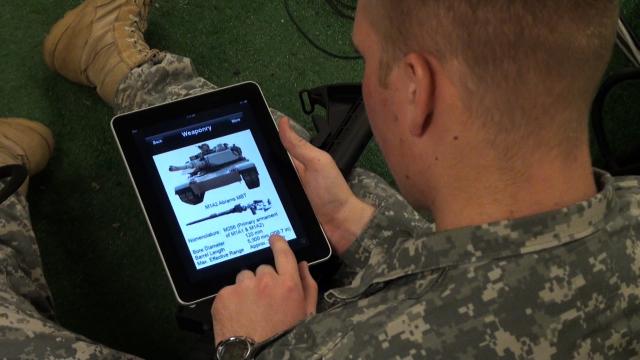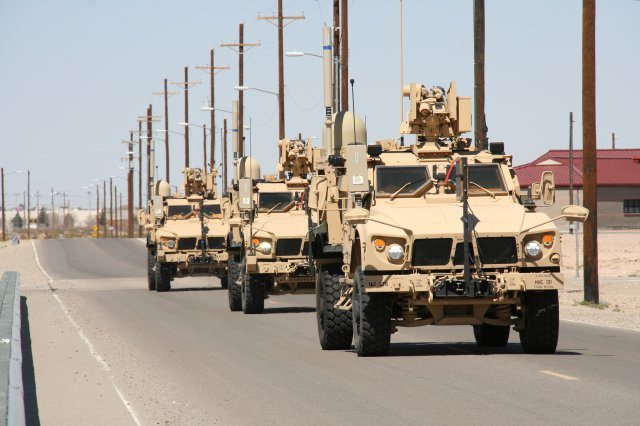The U.S. Army Test and Evaluation Command is beginning to replace paper with digital data collection options in preparation for the next Network Integration Evaluation at White Sands Missile Range this May.
NIE’s are large scale evaluation events designed to mature the Army’s tactical network, a wireless computer network that provides the Soldier with new and improved methods of communication. Part of the Army’s agile acquisition process, the evaluation takes systems, devices and other equipment under consideration and places them in the hands of Soldiers from the 2nd Brigade Combat Team, 1st Armored Division, under the Brigade Modernization Command.
Over the course of the evaluation, which is the largest of its kind, Soldiers take the systems and attempt to use them as they would during actual operations in theater. Data collected from the systems’ performances can then be given to Army leaders, allowing decision makers to more rapidly determine if a system is ready for use, in need of further development, or in need of cancellation.
One of the challenges of this data collection process is accurate test officer observations and timely Soldier feedback. NIE evaluations can easily fill an entire day with Soldiers and test officers conducting missions, troubleshooting systems under evaluation, and coordinating solutions with system developers.
Under the previous system, Soldiers and test officers would have to write down their observations and notes by hand in the field and then transcribe them into a computerized database at the end of the day.
“The idea behind the tablets is saving time for the user,” said Maj. Bradley Stremlau, an evaluation officer with ATEC’s Army Evaluation Center. “In the old days we just had pen and paper and the Soldiers and test officers were just writing their observations down, and they’d still have to go to a network kiosk and input all this data. So you would have 20, 30 or 40 pages of notes you’d have to input.”
After a long summer day of operations in the New Mexico desert, sitting down at a computer late at night to accurately copy over notes can be daunting. Using the tablets, data collectors can instead just visit the nearest network kiosk and upload their day’s notes.
“There are going to be eight kiosks, or data collection sites, up range through the NIE, all throughout the range, and the object of the game is, the Soldiers or data collectors will take their tablet to this kiosk, hook it up to the network and then download their day’s work,” said Fil Macias, chief of the networks and control division of the Systems Integration Directorate.
As White Sands Missile Range is currently installing a wireless test network for the range, it’s expected that eventually the kiosks will be able to be reduced in number or eliminated as well, replaced with the wireless network and data collection apps.
“Hopefully in the future as our wireless capabilities come up they’ll be able to drive by and the tablet will pick up the signal and download the information automatically,” Macias said.
While the tablets aren’t a system being formally tested as part of the NIE, White Sands Missile Range engineers are going to be looking at the tablets’ performance to see where else on the range they could apply similar technology.
“When we started, engineers being engineers, we wanted an Android app or an Apple app. We’re not there yet,” Macias said. “But as we progress eventually we’ll make those services; eventually we’ll have those on our cloud. The exciting thing about this program is it provides an actual application and provides a trajectory for the future.”
It’s expected that eventually the tablets could become standard issue for many of White Sands Missile Range’s data collectors, even those not working on NIE projects.
The tablets will be taking this summer’s NIE by storm, having already been issued to the NIE’s other major players at Army Materiel Command, the System of Systems Integration Directorate, and ATEC’s Operational Test Command.
“We’re working with a lot of different communities. We’re working with Army Materiel Command, Brigade Modernization Command, Information Technology Engineering Directorate, System of Systems Integration, White Sands Missile Range Materiel Test, and we proved that ATEC as an enterprise can function,” Macias said.
To ensure that all the personnel from the different NIE organizations are prepared to use the new devices, more than 150 of them were shipped out of White Sands to Aberdeen Proving Ground, Md., and Fort Bliss, Texas, for training operations being conducted this month.
“I think the data collectors are excited to finally have some technology in their hands to help them collect data at NIE. They see this as a tool that will make their jobs easier and more efficient,” Stremlau said.











